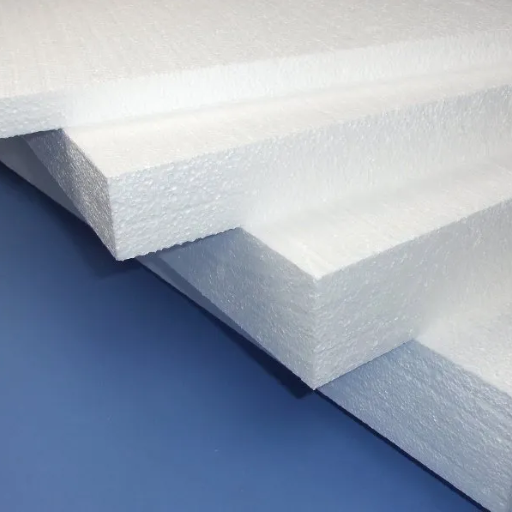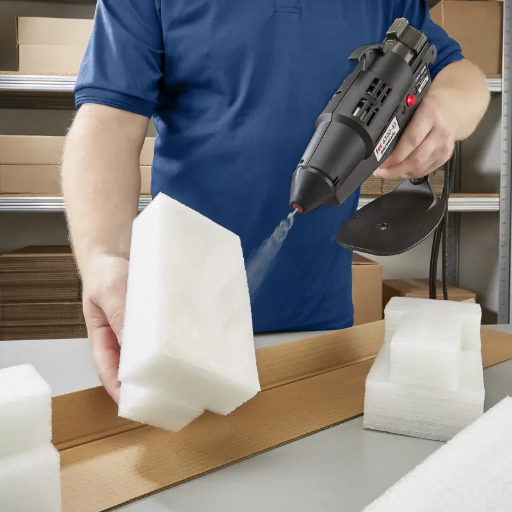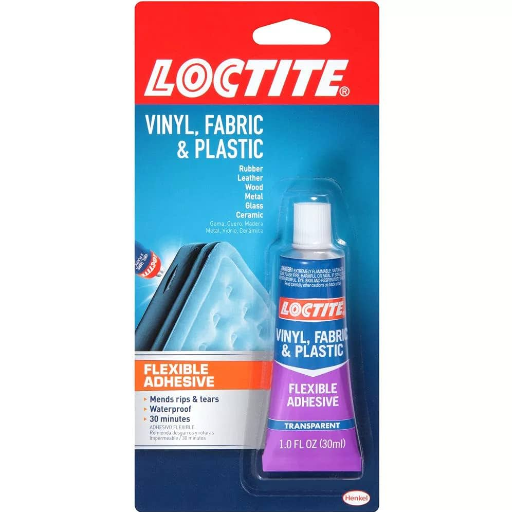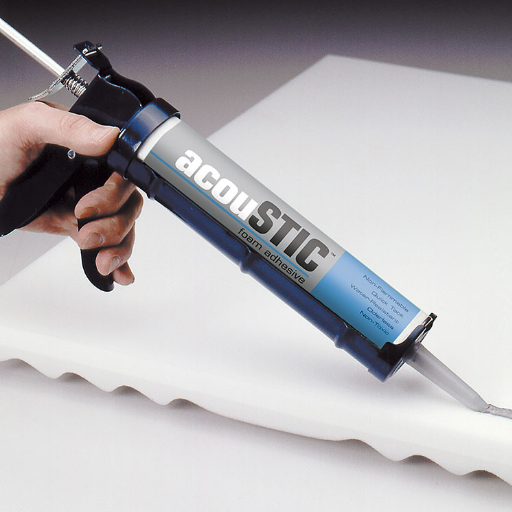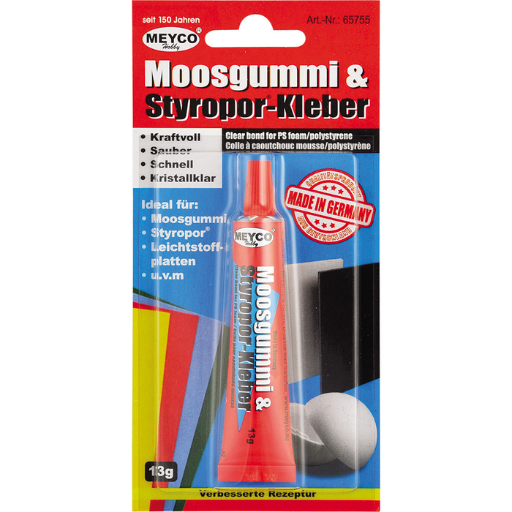Using adhesive for DIY projects requires the utmost precision. One of the most important choices to make is between Gorilla Glue and Super Glue – two very popular adhesives that are often pitted against each other. They are both quite versatile and strong; however, their composition, application, and efficiency differ drastically. This article will outline these differences and similarities across chemical structures, curing mechanisms, ideal applications, and durability under differing conditions. After learning about each product, you will be better informed on which option is better for your project.
What Are the Key Differences Between Gorilla Glue and Super Glue?

Chemical Composition and Curing Mechanisms
Gorilla Glue is a polyurethane adhesive, which requires moisture to activate and cure. It expands as it dries, filling gaps and creating a strong, durable bond. On the other hand, Super Glue, or cyanoacrylate adhesive, cures quickly upon contact with moisture and forms an instant bond. Its curing mechanism does not involve expansion, making it ideal for precise applications.
Ideal Applications
Gorilla Glue is best suited for larger projects requiring a strong bond on porous surfaces such as wood, stone, foam, and metal. Its gap-filling properties make it versatile for uneven surfaces. Super Glue, in contrast, is more effective for smaller, non-porous materials like plastics, glass, ceramics, and rubber, where precision and a quick set time are crucial.
Durability Under Differing Conditions
Gorilla Glue is highly durable and resistant to extreme weather conditions, including water, heat, and cold, making it suitable for outdoor and high-stress applications. Super Glue, while strong, is less resistant under prolonged exposure to moisture, heat, or impact, and is better used in controlled indoor environments.
Knowing these differences will help you choose the right adhesive based on your project’s specific requirements.
Composition and Chemical Properties of Adhesives
Gorilla glue and super glue differ in their chemical configurations, which gives each one different bonding characteristics. Gorilla glue is a kind of glue made of polyurethane. It is adhesive glue that expands when it cures, allowing it to fill gaps and bind robustly while being water resistant . This allows for very strong bonds to be formed with foam, wood and some kinds of porous plastics.
Super glue, also known as cyanoacrylate adhesive is glue with lower viscosity that will bond with moisture almost instantly, making it useful for smooth non porous surfaces like glass, ceramics and plastics. Besides forming strong bonds, it is less useful for gap filling as it has low viscosity and does not expand.
In other words, Super glue is better for tight, rigid joints while gorilla glue works better with rough joints.
Understanding the Drying Time and Cure Process
The time which an adhesive takes for drying as well as curing can drastically impact the bind’s strength and reliability. For example, Gorilla glue needs an initial drying period of 1-2 hours but materials will fully bond if they are clamped for an entire day. Its curing process is activated by moisture, which means water or high humidity is needed for it to work efficiently. The complete curing process lasts around 24 hours due to standard conditions.
Super glue dries and cures almost instantly when it comes in contact with water. Its layers can take anywhere between minutes to an hour to fully cure depending on how thick the remain. Curing is best achieved with rapid polymerization of its chemical composition, making super glue ideal for quick fixes that require high precision. The only downside is that environmental factors such as temperature and humidity can impact the speed of the curing process, which will lead to adjustments being necessary to fit specific project needs.
Comparing Strong Bond Capabilities on Various Surfaces Together
As to how Gorilla glue and super glue perform across various materials while measuring their bonding strength, their performance is dependent to some degree on material and environmental factors. Because it expands during curing, Gorilla glue performs best on wood, ceramics, and some porous and uneven plastic surfaces. Its moisture activated bonding makes it useful for outdoor or other strenuous work where strength is of critical importance, but can be troublesome for precision work because it results in unwanted overflows and misalignments.
Super glue, whose best attribute is its ability to bond instantaneously, performs better on metals, glass, and smooth surfaces, even plastic. Super glue can be very useful for detail-oriented work as its instant bonding properties allow for quick precision repairs, although pre-treatment may be needed to be able to effectively apply super glue on rough or porous surfaces. That being said, super glue bonds weaker when comparing heat, water, and enduring stress compared to bonds made with Gorilla glue.
Each adhesive has its strengths based on its application. Gorilla glue works best for bonding large-scale models, while super glue is ideal for fast and precise application. An understanding of the material properties, strength pertaining to the task at hand, and environmental factors are prerequisites to achieving an optimal adhesive result.
How Does Gorilla Glue Perform on Ceramic and Plastic Materials?

Because it can seep into tiny holes and create a robust long-lasting bond, Gorilla Glue works well on ceramic materials. It is useful for fixing broken ceramic pieces where strength is critical, but not nearly as effective on non-porous plastics. With non-porous Gorilla Glue, may need surface prep like sanding to increase adhesion because it’s polyurethane-based formula doesn’t stick well to smooth surfaces. Plastic melts easily so adhesives designed specifically for bonding with plastic should be ideal.
Effectiveness on Porous Materials Like Ceramic
Because of its polyurethane formula, Gorilla Glue functions excellently on porous surfaces such as ceramic. The adhesive expands while it cures, which deeply allows it to bond within the tiny pores of ceramic surfaces. This creates a strong, durable bond which can endure stress and environmental factors. To ensure the best results, it is beneficial to have the ceramic surfaces clean and damp before applying the glue. This is because the moisture activates the curing process. Nonetheless, care should be taken in not applying too much glue, as the expanding nature of the product can lead to over-excess material around the repair site. Gorilla Glue effectively repairs or bonds porous ceramic materials when the appropriate preparation and application is used.
Challenges with Certain Plastics and Dissimilar Materials
Although Gorilla Glue is famed for being multi-functional, it struggles with bonding some plastics and even different materials. Low-surface-energy plastics, like Polyethylene (PE) and polypropylene (PP), are incredibly difficult to work with because of their chemical properties. Surface treatment techniques like roughening the surface or using primer with an adhesion promoter is often necessary to improve the chances of bonding. Also, thermal stress can weaken or distort the bond over time when trying to fix two different materials with different expansion rates (for example, plastic and metal). To guarantee bonds that are durable, material compatibility and ecosystem aspects such as temperature shifts must be taken into consideration.
When Should You Choose Super Glue Over Gorilla Glue?

When accuracy, quick drying time, and shallow surface area bonding is the priority, Super Glue is usually the best option. It is especially effective for non-porous materials such as metal, ceramics, and some types of plastics. If an adhesive is needed that cures at room temperature without requiring clamps or extensive prep time, Super Glue fits that need the best. Its brittle nature, however, makes it less effective in more flexible or porous applications. For fine details and smaller repairs where precision in application is a must, Super Glue is far superior to Gorilla Glue.
Best Practices for Quick DIY Projects
As with any DIY task, the right choice of adhesives along with practices and techniques guarantees efficiency and effectiveness. It is best to start by cleaning the surfaces to be bonded so that dust, grease, or moisture does not interfere with the adhesion. After the surfaces are clean, Super Glue is the best option for precise repairs on non-porous materials such as ceramics or metal. It is best to use a small amount of glue to avoid excessive application which weakens the bond and lengthens curing time. Super Glue’s ability to rapidly cure at room temperature makes it ideal for time-sensitive tasks. For larger, porous, or flexible surfaces, Gorilla Glue is a better option when clamping is involved due to its superior bond forming ability and expandable nature. Remember to always give adequate time for the adhesive to cure completely, and follow all recommendations from the manufacturer to achieve the best outcome from your project.
Handling Uneven Surfaces and Excess Glue
While working with uneven surfaces, it’s important to use gap-filling adhesives like epoxy or some polyurethane based glues which provide a slight bulge during curing. They also bond strongly with irregular materials. Improve surface contact and adhesion by sanding or leveling the surface as much as one can before applying the adhesive. In the case of super glue spills, excess glue should be remedied promptly by wiping it with an appropriate solvent like acetone. For water based glues, a damp cloth would do the trick. Once cured, the glue normally requires mechanical removal with tools like a scraper or fine grit sandpaper. Always prepare the workspace, and clean up surfaces according to manufacturer guidelines to avoid damage and ensure optimal bonding performance.
How to Properly Apply the Glue for Optimal Results?

- Surface Preparation: Ensure all surfaces are clean, dry, and free from oils, dust, or debris. Use appropriate cleaning agents or sand the surface slightly to improve adhesion if necessary.
- Applying the Glue: Dispense the adhesive evenly, following the manufacturer’s recommended amount and application method, such as a thin layer for precision glues or a bead for stronger bonding agents.
- Clamping or Pressure: Align the surfaces accurately and apply consistent pressure or use clamps if required. This step ensures a strong bond and prevents misalignment during curing.
- Curing Time: Adhere to the curing timeline specified in the adhesive’s instructions. Avoid disturbing the bond until the glue has fully cured to maintain maximum strength.
- Cleanup: Remove any excess glue immediately with the appropriate solvent or tool before it hardens, as outlined in the manufacturer’s guidelines.
Steps to Glue to One Surface and Clamp Effectively
- Preparation of the Surface
Begin by ensuring the surface to be glued is properly prepped. Clean the surface thoroughly with an appropriate solvent to remove any dirt, grease, or grime. For smoother surfaces, lightly sand the area to create texture, allowing the adhesive to bond more effectively. Wipe away any residual dust after sanding.
- Application of the Adhesive
Apply the adhesive onto the prepared surface in a consistent, even layer. Depending on the adhesive type, a thin layer is usually sufficient. Avoid over-applying as excess adhesive can seep out and weaken the bond during clamping. Refer to the manufacturer’s instructions for precise recommendations tailored to the adhesive being used.
- Alignment and Clamping
Carefully align the second surface onto the adhesive-coated area, making sure there are no gaps or misalignments. Apply uniform pressure over the bonded area by using clamps, ensuring tight, consistent contact between the surfaces. Use protective materials, such as soft pads, under the clamps to avoid damage to the materials. Tighten the clamps only to the extent needed to hold the surfaces securely without causing deformation.
- Curing and Clamp Removal
Follow the curing time provided in the adhesive’s instructions, which can range from several hours to a full day. Refrain from moving or disturbing the bond during this period to maintain integrity. Once the curing time is complete, gently remove the clamps and verify the bond.
- Post-Cure Cleanup
Inspect the area for any adhesive overflow. Use the recommended cleaning agent to remove any excess glue, as hardened adhesive can compromise the final appearance or functionality of the project. Ensure both surfaces are smooth and free of unnecessary residue.
By following these detailed steps, you can ensure a strong, durable bond that meets the highest standards of adhesion. Always refer to the adhesive manufacturer’s guidelines for optimal results.
Tips to Wipe Away Any Excess and Ensure a Long-lasting Bond
- Use the Right Tools for Cleanup
Remove excess adhesive immediately after application using a clean cloth, plastic scraper, or cotton swab, depending on the adhesive type and surface. For wet glue, a damp cloth is effective, while solvents like acetone may be required for certain materials, as indicated by the adhesive manufacturer.
- Clean Precisely Without Compromising the Bond
Avoid using excessive force while wiping, which could disturb the adhesive or weaken the bond. Work gently around the edges, ensuring you remove any visible overflow without penetrating the bonded area.
- Allow Proper Curing Before Final Cleanup
For residual cured adhesive, use a recommended cleaning agent or adhesive remover, carefully following safety guidelines. Sandpaper or a fine blade can also be used for hardened glue, ensuring not to damage the bonded surfaces.
- Prevent Overflow with Precise Application
To minimize excess adhesive during bonding, apply a controlled amount to the surface, using an applicator that provides even distribution. This approach reduces waste and ensures a neat, professional finish.
By cleaning as recommended and adhering to application best practices, you can achieve an aesthetically pleasing result while ensuring the bond remains durable and effective over time.
What Are the Common FAQs About Using Gorilla Glue and Super Glue?

- What is the difference between Gorilla Glue and Super Glue?
Gorilla Glue is a polyurethane adhesive that expands as it cures, making it ideal for porous materials like wood, foam, and stone. Super Glue (cyanoacrylate) bonds quickly without expansion and works best for non-porous surfaces like plastic, metal, and ceramics.
- Can Gorilla Glue or Super Glue be used on all materials?
No, while both adhesives are versatile, certain materials such as polyethylene (PE), polypropylene (PP), or materials with oily surfaces may require specialized preparation or may not bond effectively.
- How long does it take for Gorilla Glue and Super Glue to dry?
Gorilla Glue typically takes 1-2 hours to set and up to 24 hours for a complete cure. Super Glue bonds in seconds and achieves full strength within a few minutes, depending on environmental conditions like humidity.
- Are Gorilla Glue and Super Glue waterproof?
Gorilla Glue is fully waterproof, making it suitable for outdoor and wet-environment applications. While many Super Glues are water-resistant, they are not fully waterproof under prolonged exposure.
- How do I remove Gorilla Glue or Super Glue from surfaces or skin?
For Gorilla Glue, curing adhesive can often be removed with sandpaper or a chisel after drying. For Super Glue, acetone (e.g., nail polish remover) is an effective solvent for breaking down the bond. Exercise caution to avoid damage to the surface or skin.
- Is safety gear required when using these adhesives?
Yes, to ensure safety, wear gloves and work in a well-ventilated area to avoid skin contact or inhalation of fumes, especially for Super Glue. Always follow the manufacturer’s guidelines for safe usage.
Addressing Concerns About Strong Odor and Safety
With regards to strong smells and possible danger, I take the necessary safety precautions. Super Glue and Gorilla Glue can be odorous due to the chemical makeup of their glues, with Super Glue usually having a more pungent smell because it is based on cyanoacrylate. To lessen these, I always work in a well-aired space and put on gloves to reduce contact with the skin. Both products have designated uses, which I always obey as the manufacturer guidelines as provided for the maximum safety and maximum effectiveness. If I want to get rid of Gorilla Glue or Super Glue, I have a choice of several correct options, eg, sanding the glue, or applying acetone, depending on which brand of glue I am dealing with. This way, I control the smell and safely manage the glue.
Exploring Technical Specs and Product Features
Comparative analysis of various information sources offers a more complete view as it relates to the technical specifications and constituent features of a product. The details around specifications commonly encompass scale, weight, materials used, and power features, depending on the category of the product. Electronic devices, for instance, often advertise the type of processor used, memory, display quality, and battery life. Features can also relate to proprietary and user-centered features or even system integrations.
Evaluation of the product can be greatly supported by credible information available from authoritative sources. As an example, while analyzing elegantly stylish smartphones, the most common characteristics of the top results always include high definition OLED displays, multi-core processors enabling high performance, as well as optimized AI-based energy saving mechanisms. Different from other types of laptops, gaming laptops emphasize GPU capability, better refresh rates, and adequate cooling for smooth gameplay. Knowing the value of insightful information from commonly ranked websites about any product helps consolidate a source for making decisions regarding the technical features of a product.
References
Frequently Asked Questions (FAQ)
Q: What are the main differences between Gorilla Glue and Super Glue?
A: Gorilla Glue, specifically Gorilla Super Glue Gel, is a polyurethane adhesive that expands when curing, providing a strong bond for a variety of materials. Super Glue, or cyanoacrylate glue, offers an instant bond and is ideal for quick repairs. Both glue products are effective, but the type of glue you choose depends on your specific needs.
Q: Are Gorilla Super Glue and Super Glue suitable for all materials?
A: Gorilla Super Glue and Super Glue work on a variety of materials, including plastic, wood, metal, ceramic, and more. However, they may not form good bonds with polyethylene or polypropylene due to their non-porous nature. For these materials, you may need a specialized adhesive that works better.
Q: How do I know which adhesive is best for my project?
A: Choosing the right glue depends on the materials you’re working with and the type of bond you need. Gorilla Super Glue is great for a reliable bond on most surfaces, while Super Glue is perfect for quick, long-lasting repairs in an instant. Consider the materials and the conditions your project will face.
Q: How long does it take for Gorilla Super Glue and Super Glue to dry?
A: Gorilla Super Glue typically takes 10-45 seconds to bond, depending on the substrate and conditions. Super Glue’s drying time is similar, providing a fast bond for quick repairs. Ensure that the surfaces are protected from air to achieve optimal results.
Q: Can Gorilla Super Glue handle bumps and drops?
A: Yes, Gorilla Super Glue is developed for long-lasting repairs and can handle bumps and drops due to its strong adhesion properties. It’s designed to work well on many surface materials, making it a reliable choice for durable repairs.
Q: Are there any specific application tips for using these glue products?
A: When using Gorilla Super Glue or Super Glue, it’s important to apply a small amount to one of the surfaces. Press the two surfaces together firmly and hold until the glue dries. Ensure the bottle nozzle is clean to prevent clogging, and store the glue in a cool, dry place.
Q: What should I do if I get uncured Gorilla Glue on my fingers or nails?
A: If you get uncured Gorilla Glue on your skin, use acetone or isopropyl alcohol to gently remove it. Avoid pulling or scraping the glue off, as it can be abrasive. Once cured, Gorilla Glue is more difficult to remove, so act quickly.
Q: Does Gorilla Glue require moisture to activate?
A: Unlike Gorilla Glue, which requires moisture to activate and form a strong bond, Gorilla Super Glue and Super Glue do not need moisture. They bond quickly with the application of pressure, making them convenient for a variety of materials.
Q: What should I do if the glue expands during the setting process?
A: If Gorilla Glue expands during the setting process, it can be trimmed or sanded once cured. This expansion helps fill gaps for a stronger bond, but ensure you apply it sparingly to prevent excessive foam during set.
















